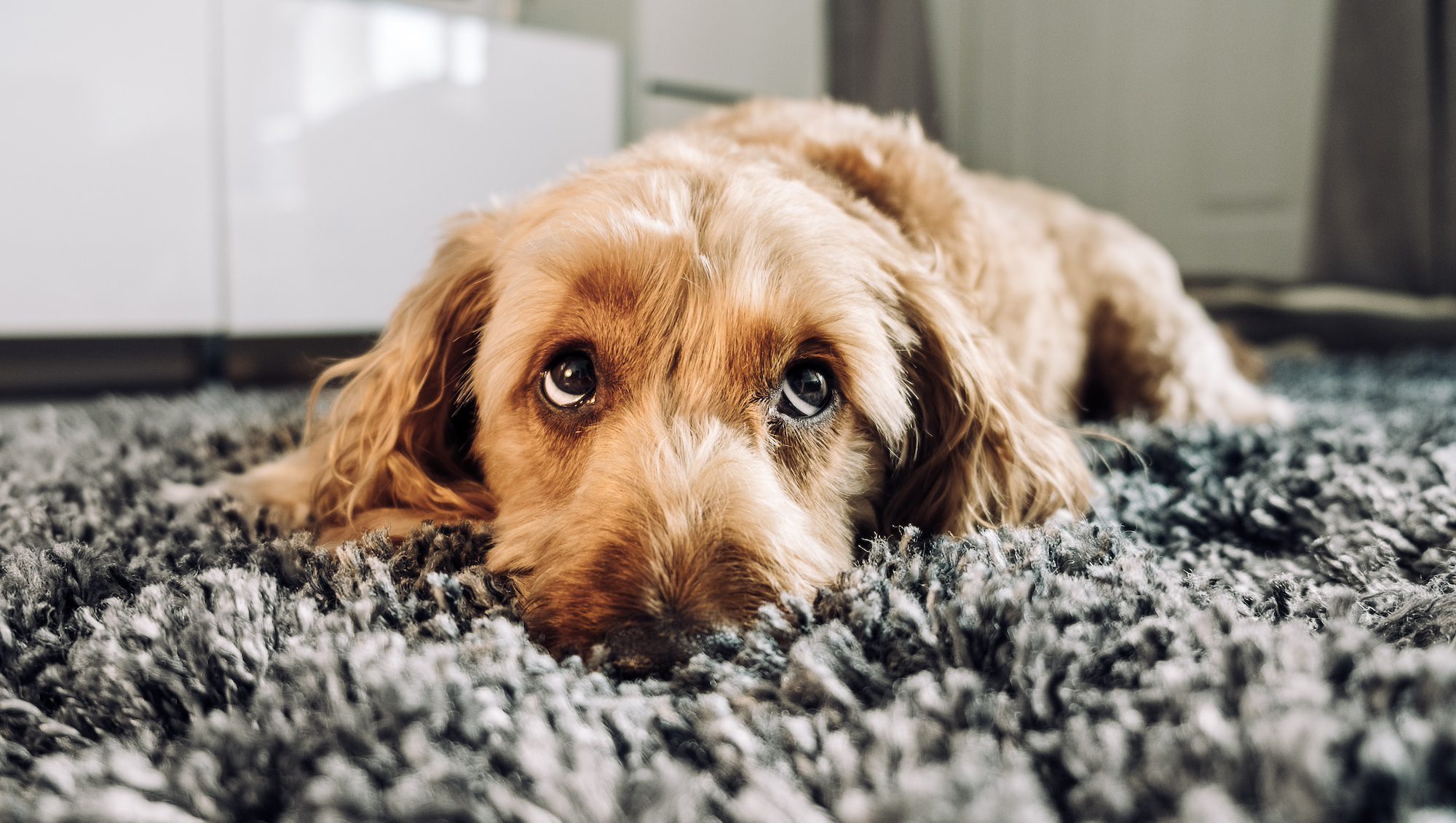
If you’ve ever noticed goop or crusty bits in the corners of your dog’s eyes, you may wonder what they mean and if they’re anything to worry about. Pretty much all dogs have these “eye boogers” from time to time, and they’re often harmless. But there are times when eye discharge can be a sign of conditions that require veterinary attention. Here’s a rundown of various types of eye discharge and what they can mean. As always, if you have any specific questions about your dog’s health, call your veterinarian.
What do different types of eye discharge mean in a dog?
Goop or crust that’s light brown, clear, or gray: If you see a little bit of this in the morning, it’s in the corners of both eyes, and it’s usually the same amount, chances are it’s the result of your dog’s tears flushing out dust. You should always ask your vet if you’re worried, but it’s common for dogs to have some goop or crust when they wake up.
Yellow or green discharge: Broadly speaking, yellow or green discharge could mean a viral or bacterial infection—for example, pinkeye—and definitely calls for a visit to the vet. Other signs of pinkeye include swelling and a brighter pink or red color of the conjunctiva.
Tear stains: These may appear as darkened brown or reddish-brown areas in the hair around the eyes. They’re especially noticeable on dogs with white coats. These marks are caused by compounds called porphyrins, excreted through a dog’s body via tears, saliva, and urine—they show up when a dog produces excess tears, or can’t drain their tears efficiently via normal means. There are a number of causes of tear stains, including genetics, allergies, eye irritation and infection, and poor diet. If you notice tear stains on your dog, give your vet a call.
White or milky discharge: This can be the result of a corneal ulcer, and if you see it you should call your vet right away. Corneal ulcers are treatable with medication, but can be very painful and have serious, irreversible consequences if left alone.
Watery, clear discharge: This can be totally normal, or an indication of an allergy, an injury, or an illness like dry eye or glaucoma (the latter also has many other signs, so don’t jump to the conclusion that it’s the reason for your dog’s watery eyes). If you see a little clear, watery discharge with no other unusual signs, you may be able to watch your dog for a couple of days. If there’s a huge amount of it, your dog is squinting, it comes with other signs of illness, or it continues for more than a few days, call your vet—in many cases, prompt care can make a big difference in your dog’s prognosis.

When to see the vet about your dog’s eye discharge
If you see significantly more eye discharge than you’re used to, or it looks much different, it’s a good idea to call a professional to make sure there’s not a medical reason for the shift.
If your dog’s eyes are red, pink, puffy, or swollen; they’re blinking more than usual; or they’re squinting, that’s another sign that you should call your vet. That also goes for green or yellow discharge—which, as noted above, can indicate an infection.
Any indication that your dog is experiencing pain or discomfort also calls for an exam. Unusual yelping, whining, or barking, or scratching near the eye, can all be signs that your dog’s eye hurts or is uncomfortable.
If your dog does have an injury, allergies, or an illness, in most cases your vet will be able to help them. The key is not to ignore signs that something is wrong; sometimes eye problems in dogs are emergencies, or can become serious if you wait too long to treat them.

How to clean dogs’ eye goop
You can carefully wipe away normal goop or crust from the corners of your dog’s eyes with saline and a cotton ball—or a wipe made specifically for that purpose. Some humans may want to use a tool called an “eye comb” to clean near their dogs’ eyes.
Vets don’t recommend using your finger, as you could inadvertently cause an infection that way. If you’re not sure about the proper technique, ask your vet to demonstrate.
Never use any product to clean your dog’s eyes (or, for that matter, any part of your dog) without consulting your veterinarian first. Labels and marketing aside, some products that claim to be okay for dogs may be generally unsafe, or not appropriate for your dog.
If your dog’s eye discharge is related to a medical condition, your vet may give you specific care and cleaning instructions.
Do some dog breeds produce more eye gunk than others?
Brachycephalic (flat-faced) dogs like pugs, bulldogs, and Pekingese are more prone to eye discharge because their anatomy can interfere with tear drainage.
How to protect your dog’s eyes
Watching your dog closely and having a solid sense of what’s normal for them will make it easier for you to identify any concerning changes.
Beyond that, do your best to avoid anything touching or getting into their eyes. This means keeping them away from sharp objects, pointy or prickly vegetation, and the like. Sand, dust, and other flying matter can get into dogs’ eyes. If your dog is going to be doing something like playing on sand or a dusty piece of ground, especially in the wind, consider putting them in goggles. Not only can this prevent injury, but it may also result in a cute photo op.
If your dog has long hair on their face, keep it neatly trimmed so it doesn’t fall into their eyes.
When you’re giving your dog a bath, for example—even when using dog-safe shampoo, which is a must—do your best to keep it out of their eyes.
And feed your dog right; proper nutrition can help keep their immune system strong.




